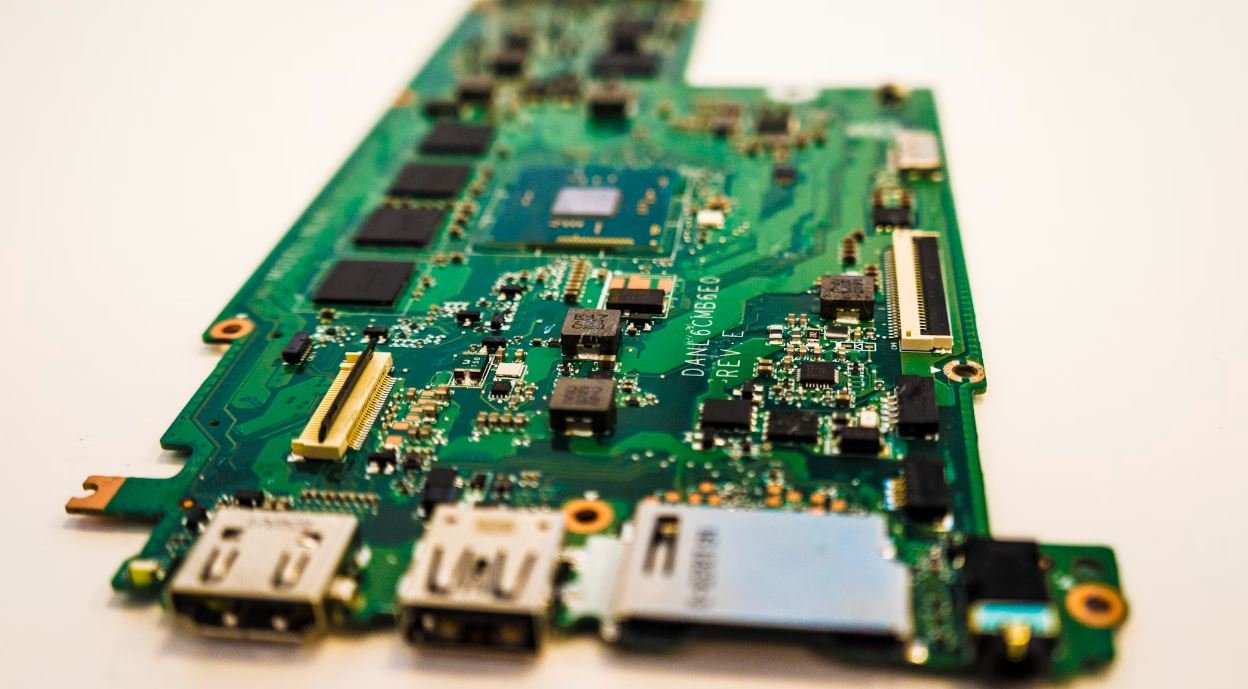Can AI Make Deepfakes?
In recent years, artificial intelligence (AI) has made tremendous strides in various fields, including image and video processing. One of the concerning applications of AI technology is the creation of deepfakes, which are manipulated videos that convincingly alter people’s appearance and actions. But can AI really create these realistic deepfakes?
Key Takeaways:
- AI technology has advanced to the point where it can generate highly convincing deepfakes.
- Deepfakes pose significant ethical and privacy concerns for individuals and society.
- There is ongoing research and development in AI-based techniques and detection methods to combat deepfakes.
**Artificial intelligence algorithms**, particularly those utilizing **deep learning techniques**, have become more sophisticated in recent years. These AI algorithms are capable of **analyzing vast amounts of data** and learning patterns to generate highly realistic deepfakes.
Deepfakes are a result of combining AI and **generative adversarial networks (GANs)**. GANs consist of **two neural networks**, a **generator** and a **discriminator**, which work together to create and evaluate the authenticity of the generated images or videos. By constantly learning from each other, GANs can produce deepfakes that are increasingly difficult to distinguish from genuine footage.
**One interesting application** of deepfake technology is in the entertainment industry. It offers new opportunities for filmmakers and visual effects artists to create realistic scenes and characters, reducing the need for costly and time-consuming practical effects.
The Impact of Deepfakes
While deepfakes can be fascinating from a technological standpoint, they also raise serious concerns. Here are some of the potential impacts:
- **Misinformation**: Deepfakes have the potential to spread false information and manipulate public opinion.
- **Political Implications**: Deepfakes can be used to create fake footage of public figures, potentially influencing elections and damaging reputations.
- **Privacy and Consent**: Deepfakes can violate individuals’ privacy by putting their likeness into compromising situations without their knowledge or consent.
- **Fraud and Extortion**: Criminals can use deepfakes for impersonation, fraud, or extortion purposes, causing financial and emotional harm.
- **Trust Issues**: The prevalence of deepfakes may lead to a general erosion of trust in visual media.
Detecting and Combating Deepfakes
As deepfakes become more prevalent and sophisticated, efforts to detect and combat them have also intensified. Researchers are developing various techniques and tools to tackle this issue:
- **Forensic Analysis**: Experts use detailed analysis of facial features, movement inconsistencies, and artifacts to identify deepfakes.
- **Dataset Creation**: Building extensive deepfake datasets for training AI models to recognize and distinguish manipulated videos from real ones.
- **Multimodal Detection**: Combining different AI techniques, such as audio analysis, to improve the detection accuracy.
- **Blockchain Technology**: Utilizing blockchain to verify the authenticity of digital media and provide a tamper-proof record.
Real-World Examples
| Example | Description |
|---|---|
| **Obama Deepfake** | A deepfake video of former President Barack Obama was created to raise awareness about the potential misuse of the technology. |
| **Deepfake Pornography** | Deepfake technology has been misused to create explicit content featuring celebrities without their consent. |
The Future of Deepfakes
As AI technology continues to advance, the ability to create deepfakes is likely to become more accessible and increasingly challenging to detect. To address this growing concern, collaboration between researchers, policymakers, and technology companies is crucial. It is essential to develop robust detection methods, educate the public about the existence of deepfakes, and establish legal frameworks that protect individuals’ rights.
Conclusion
While AI can undeniably create convincing deepfakes, it is important to recognize the potential dangers they pose and the need for preventive measures. The impact of deepfakes on society and individuals is far-reaching, and continued efforts are necessary to combat the negative consequences and establish a safer, more trustworthy digital environment.

Common Misconceptions
AI and Deepfakes
There are several common misconceptions regarding the abilities of AI to create deepfakes. While AI has made significant advancements in image and video manipulation, it is important to debunk these misconceptions and understand the limitations.
- AI can perfectly create realistic deepfakes:
- AI can create deepfakes without any human assistance:
- All deepfakes can be easily identified and distinguished from real content:
AI technology has certainly reached impressive levels in deepfake creation, but it is far from perfect. While it can generate highly convincing visual forgeries, there are often subtle imperfections that experts can identify. It is important to be aware that deepfakes are not always flawless and cautious in accepting their authenticity at face value.
- The use of AI alone is sufficient to generate deepfakes:
- Only professionals can create deepfakes:
- Deepfakes are predominantly used for malicious purposes:
Creating deepfakes typically requires a collaboration between AI algorithms and skilled human input. While AI technology provides the tools and automation for generating convincing videos, human expertise is often necessary to refine and enhance the final outcome. This means that deepfake production is not exclusive to professionals and can be attempted by individuals with the right knowledge and resources.
- Deepfakes are always harmful and unethical:
- Only celebrities and public figures are targeted by deepfakes:
- Deepfakes are easily detectable and preventable:
While the potential harm of deepfakes cannot be overstated, it is essential to recognize that not all deepfakes are malicious or unethical in nature. Deepfakes can be used for artistic expression, entertainment, or educational purposes when done responsibly and with consent. Additionally, deepfakes can target anyone, not just celebrities, making it important for society to collectively address the issue and develop effective detection and prevention methods.
- AI technology will always be one step ahead in deepfake detection:
- Deepfakes will lead to the complete loss of trust in visual media:
- Deepfakes are a recent phenomenon solely created by AI:
While AI plays a significant role in both deepfake creation and detection, it is important to recognize that the race between AI generation and AI detection is an ongoing battle. As AI technology advances, so too will the techniques for detecting deepfakes. It is also worth noting that, while AI has accelerated the production and dissemination of deepfakes, the concept of image manipulation and visual deception predates the rise of AI.

Introduction
Deepfakes are a growing concern as advanced AI technologies have made it easier to create highly convincing fake videos. This article explores the capabilities of AI in generating deepfakes, shedding light on various aspects such as the creation process, detection methods, and potential implications.
Table: Commonly Used Deepfake Techniques
In the table below, we showcase different techniques commonly employed in the creation of deepfakes.
| Technique | Description |
|---|---|
| Face Swapping | Replacing a person’s face in a video with someone else’s. |
| Audio Dubbing | Modifying or replacing the existing audio track with a new one. |
| Lip Syncing | Manipulating a person’s mouth movements to match a different audio source. |
| Puppeteering | Controlling the facial expressions and movements of a subject in a video. |
Table: Extent of Deepfake Usage
Deepfakes have found applications in various domains. The following table showcases the extent of their usage in different fields.
| Domain | Usage |
|---|---|
| Entertainment | Creating parody videos or impersonations for comedic purposes. |
| News and Journalism | Threatening the credibility of news by manipulating trusted sources. |
| Politics | Generating misleading content to influence public opinion. |
| Adult Content | Producing explicit videos with celebrities’ faces pasted onto performers. |
Table: Deepfake Detection Strategies
In the table below, we outline different methods used to identify deepfake videos.
| Strategy | Description |
|---|---|
| Facial Analysis | Using advanced algorithms to detect anomalies in facial movements and expressions. |
| Audio Analysis | Analyzing audio signatures to identify potential inconsistencies or manipulations. |
| Metadata Examination | Examining metadata embedded within videos for signs of tampering or manipulation. |
| Comparative Analysis | Comparing the suspected video with authentic reference material to identify discrepancies. |
Table: Notable Deepfake Incidents
The table below highlights some well-known incidents involving the use of deepfake technology.
| Incident | Description |
|---|---|
| Mark Zuckerberg Deepfake | A video portraying Facebook’s CEO delivering a fake speech went viral. |
| Gal Gadot Deepfake | A video showing the actress in a compromising situation circulated online. |
| Political Figures | Several political leaders have been targeted with deepfake videos during campaigns. |
| Revenge Porn | Deepfakes have been used to create non-consensual explicit content using individuals’ photos. |
Table: AI Algorithms for Deepfake Generation
The table below provides an overview of the AI algorithms commonly used to generate deepfake videos.
| Algorithm | Description |
|---|---|
| Generative Adversarial Networks (GANs) | Utilizes a combination of generator and discriminator networks to create realistic output. |
| Convolutional Neural Networks (CNNs) | Extracts and processes facial features to create accurate face replicas. |
| Autoencoders | Encodes and decodes facial images to facilitate real-time manipulation. |
| Recurrent Neural Networks (RNNs) | Models the temporal dependencies in videos to generate coherent deepfake sequences. |
Table: Deepfake Regulations and Guidelines
The table below lists some regulations and guidelines aimed at addressing the concerns associated with deepfake technology.
| Regulation/Guideline | Description |
|---|---|
| European Union’s Deepfake Action Plan | Aims to tackle the spread of disinformation and enhance media literacy. |
| United States DEEPFAKES Accountability Act | Seeks to regulate deepfakes and establish consequences for malicious use. |
| Media and Social Media Platforms’ Policies | Many platforms actively remove deepfake content and apply fact-checking measures. |
| Education and Awareness Campaigns | Efforts aimed at educating users to identify and report deepfakes. |
Table: Ethical Considerations
The table below outlines some of the ethical concerns arising from the usage of deepfake technology.
| Concern | Description |
|---|---|
| Privacy Violations | Deepfakes can compromise the privacy of individuals, making them vulnerable to exploitation. |
| Misinformation Propagation | The spread of highly convincing deepfake videos can contribute to the proliferation of misinformation. |
| Identity Theft | Deepfakes could be used to impersonate individuals, leading to identity theft and fraud. |
| Eroding Trust | The prevalence of deepfakes undermines trust in media, institutions, and public figures. |
Conclusion
The rise of AI technology has facilitated the creation of deepfakes, which pose significant challenges regarding authenticity and trust. While detection strategies and regulations are vital in addressing this issue, the ethical considerations surrounding deepfakes remain complex. To mitigate their harmful impact, it is essential for stakeholders to collaborate and develop comprehensive solutions that protect individuals’ privacy and preserve the integrity of information dissemination.
Can AI Make Deepfakes?
FAQs
How is AI used to create deepfakes?
What are the potential dangers of deepfakes?
How can deepfakes be detected?
What purpose does AI serve in the creation of deepfakes?
Is it legal to create or distribute deepfakes?
Can deepfake technology be used for legitimate purposes?
What steps are being taken to combat the negative effects of deepfakes?
Can AI algorithms be used to detect deepfakes?
Are deepfakes limited to video content only?
How can individuals protect themselves from the risks of deepfakes?




